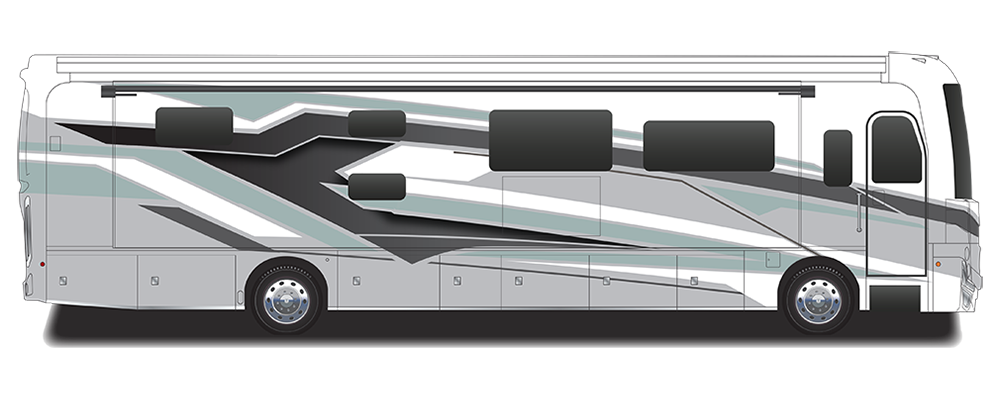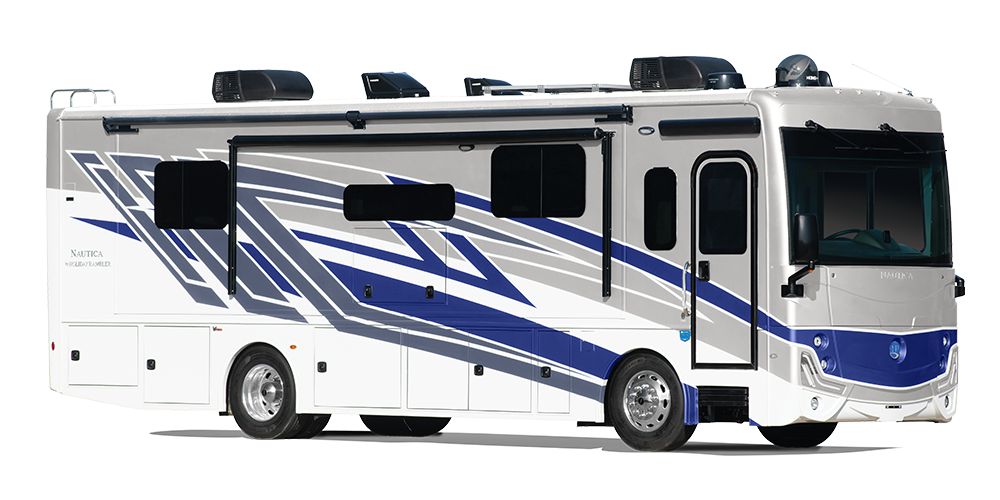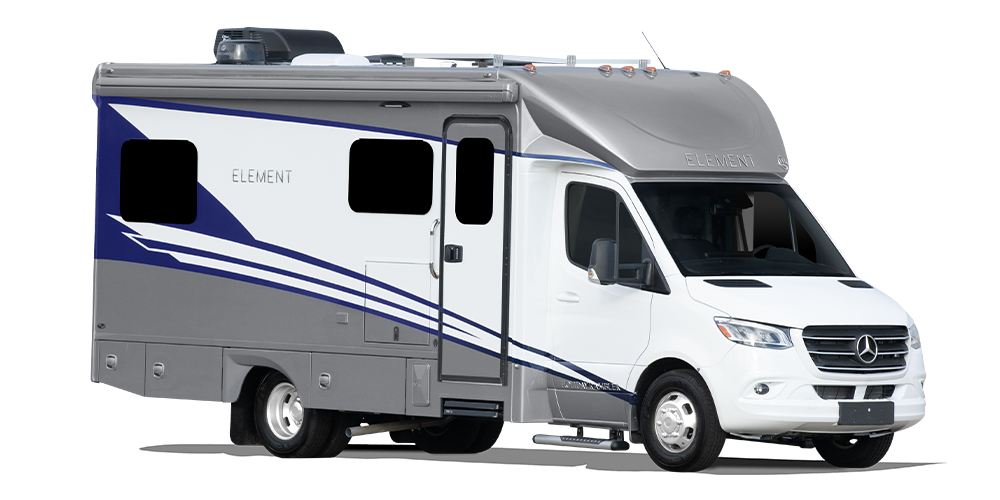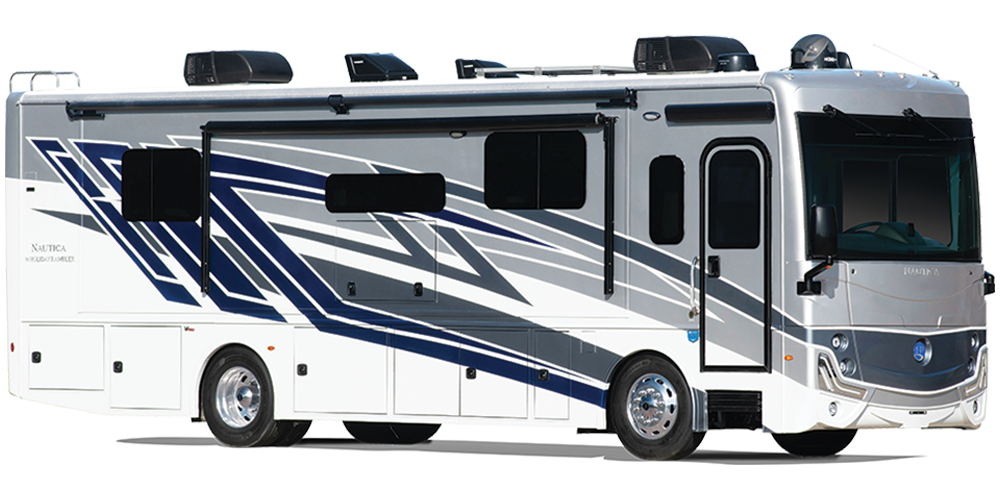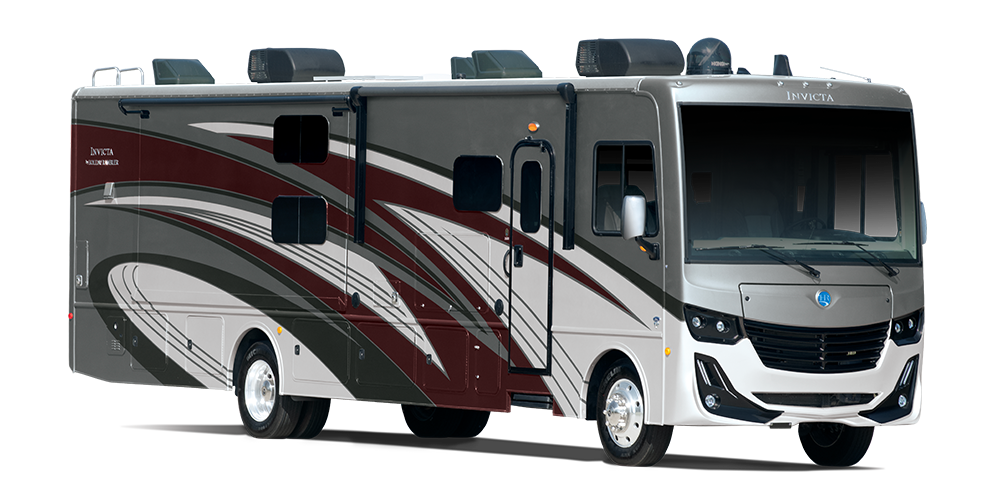Weight Management: Know Your Numbers
As an A Class Motorhome owner one of the most important things you need to know about your coach is the numbers. We’re talking tank capacities, height, and the toughest one, weight. Your coach’s weight rating is extremely important to know and be aware of. And if you have a gas coach like we do, you need to be keenly aware of your weight since gas chassis coaches typically don’t have the carrying capacity of their diesel pusher counterparts. To be honest, we didn’t take too many of our numbers into consideration upon our RV purchase. But even so, we were very conscious that moving into a smaller space from our house meant bringing less items, only the necessary quantities, and very few extras.
This is one of those ‘nervous grin’ topics. Ask an RVer what their rig weighs and many will give the nervous grin and say, “we haven’t hit the scales, I almost don’t want to know!” Many just assume they are good to go and never actually get weighed to know for sure. We definitely fell into that category! Our thought was that if we had the space for it, we could bring it aboard!
It wasn’t until a year into our journey when our 2017 Vacationer finally got on the scale that we realized we were egregiously overweight and needed to drastically change a few things. When it comes to your rig, taking the weight ratings seriously can and will help to keep your family, rig, and others safe during travel days. If your rig is overweight, it can put undue stress on the engine, transmission and tires as well as suspension and brake components. It will also increase your acceleration and braking distances and affect your coach’s performance on steep climbs and descents. And, of course, your fuel mileage will also suffer. Avoiding these costly effects is a great reason to know and regularly (we suggest twice a year) check your weight to make sure you’re in good shape!
Over the past 3 years, we’ve found numerous ways to help keep our weight in check. and wanted to share in hopes that they might help you too!
Before we get into it, let’s cover a few terms to set the stage. Somewhere in your coach, usually near the driver area, will be a large sticker that lists out all the important numbers and weight ratings of your specific coach. There is also another sticker (ours is on the door) that provides the exact cargo capacity of your coach to stay within your GVWR.
1. GVWR is the Gross Vehicle Weight Rating. This is the max weight that your coach can weigh, including all passengers, cargo, and fluids (fuel, LPG, water).
2. GCWR is the Gross Combined Weight Rating. If you tow a vehicle behind your coach, this number is the max weight your loaded coach and your towed vehicle added together can weigh. One thing to note here is that GCWR trumps the hitch rating. For example, even if your tow hitch is rated for 10,000lbs, but your coach weight only allows for towing 7,000 under the GCWR, then you should not tow a vehicle heavier than 7,000 lbs.
3. GAWR is the Gross Axle Weight Rating. This lets you know how much weight each axle is rated for. So not only do you need to know how much the coach weighs in total, but you need to know how that weight is distributed between your front and rear axles.
One thing to note, we live fulltime in our Vacationer which means we certainly have more items with us than we would for a two-week vacation or extended stay. However, these tips can be helpful for everyone who enjoys time out in their A Class because we all know how easy it is to accumulate extra things along the way! Also keep in mind that little things add up to a lot of weight if you don’t keep tabs. A new book here, an extra pair of boots there, and that growing collection of National Park sweatshirts may seem insignificant by themselves but add them all up and they begin to make a difference.
Kitchen Appliances
Between pots and pans, an Instant Pot, toaster, juicer, and more, kitchen appliances not only take up a significant amount of space they add a lot of weight too! Leave behind as much as you can here or agree to bring the one item that gets used the most by your family. Instapots are quite popular for RV use because they are so versatile and can replace multiple cookware items in one unit. Other kitchen staples include a skillet, a decent size pot (if it can share a lid with the skillet, that’s a bonus!), and a small saucepan. And don’t forget the coffee maker!
Other ways we have reduced our weight in the kitchen is with plastic plates and bowls. We also use plastic mixing bowls that double as serving bowls. And all our drinkware is multipurpose. We use stainless steel water bottles instead of cups or glasses. While not the lightest drinkware per piece, they are also our water bottles on the go that can be used outside or on adventures. This reduces the overall total amount of drinking vessels we have on board.
Streamline Bathroom Products
Everyone has their preferences for which personal care products they use. But lots of bottles of shampoo and body wash can add a surprising amount of weight. If you can, find products that work for everyone it will save space and weight! As far as our stuff goes, the kids have their own toothpaste, shampoo, and body wash which they share. And likewise, we also share our bath products to reduce needing so many different types for each person. By sharing the same products, we have been able to use a wall mounted shower dispenser which eliminates the need for numerous heavy bottles of bath liquids.
Keeping the number of towels in check will also be very helpful. 1 bath towel and 1 beach/pool towel per person is the way to go. This may mean you wash your towels a little more frequently but having less on board is always beneficial. Speaking of laundry day, we all need laundry detergent, but those giant liquid bottles are bulky and heavy! We’ve tried numerous things over the past three years and finally landed on detergent sheets. These laundry sheets are super light, take up practically no room at all, and are better for the environment and us too!
Clothing is heavy!
We have a lot of clothes. Granted, we live full time in our Vacationer and aren’t afraid to spend some time in winter weather, so we have clothing for all seasons on board. That being said, we still probably have more than we need. Think about laundry day and how heavy that bag of dirty laundry is! Most likely that’s not all the clothes you’re carrying with you, so imagine how heavy ALL your clothes would be. So, we try to (well, Spencer does anyway) get rid of clothes we have not worn in a while. If they are not being worn, they are just taking up space and adding unnecessary weight. Or if you can, switch out you’re clothing seasonally to keep it in check.
Travel Day Weight Management
As you can imagine being a bit heavier while stationary isn’t as critical as it is on travel days. To help us manage our travel day weight, we do a handful of things. First, we try to make sure our water tanks are as empty as possible. It’s a typical practice, but we make sure to dump our waste tanks before hitting the road. We always keep about 20 gallons of water in our fresh tank for use on the road or in case of water issues at a campground. But if we are planning to boondock and want to fill our fresh water to the full 100 gallons, we try to find fresh water to fill up closer to our boondocking spot rather than fill it before we hit the road. At more than 8lbs per gallon, a full fresh tank is an additional 800+lbs of weight that we’d rather not transport! We also try to deplete our food storage in our refrigerator and cabinets when possible. Of course, we keep snacks and an arrival dinner on hand, but we’ll do most of our major grocery shopping when we arrive at our destination.
One In, One Out
The best way to keep your overall weight in check is to not bring any new things on board! A good policy to adhere to is the One In, One Out method. This means if you want to get something new, something old must go in order to make room. This is easy when you wear out a pair of hiking boots and have to get a new pair. It is not as easy when you spend the holidays on the road and you’re trying to tell your kids that they should donate a few older toys to make room for what Santa brought. But somewhere in the middle is the balance of keeping a nice equilibrium and staying below your GVWR.
Pack it Right
As we mentioned earlier, it’s not only how much weight you have on board, but also how that weight is distributed. You can be under your GVWR, but still exceed the GAWR on one of your axles. When loading up for a long trip or packing most of your belongings along for the journey like we did, it’s important to distribute the load accordingly. Our vacationer is 37 ft long and has a decent overhang behind the rear axle. Without diving deep into a math and physics lesson on weight and levers, our general rule of thumb is to try and keep the weight over or between the axles. So, things like tools, camping chairs, our griddle, and other heavy gear are packed in the storage compartments between the axles. Things like extra blankets, our Christmas tree stand and snow shovel (told ya we like the winter!) and other lighter items are kept in the storage compartments to the rear of the coach.
Ultimately keeping your weight down is a strategic balance of bringing what you need, a few things you want, utilizing items in numerous ways and trying to use/find the lightest options of items out there. So next time you stop for fuel at a truck stop with a CAT Scale, swing in, and see how you are tracking on your numbers!
Most Popular Blogs
10 Things Anna Vaus Learned Living in a Van on Tour
samanthamcdonald2025-06-23T19:48:51+00:00June 23, 2025|
10 Things Anna Vaus Learned Living in a Van on Tour When singer-songwriter and storyteller [...]
Hitting the Road with Anna Vaus: Her Favorite Stops on the Xpedition Adventure
samanthamcdonald2025-05-08T18:57:05+00:00May 8, 2025|
There’s nothing like seeing the world with a Holiday Rambler behind the wheel — [...]
